Coffee flavor profiles vary so dramatically, that when searching for the perfect cup you never know where you may find it – understanding different Coffee Processing Methods is essential to understanding which beans are likely to carry your favorite types of flavors, as is basic knowledge of different Coffee Regions and different Strains or “Cultivars.”
What do we mean by “Processing”?
Several different processes are used to prepare raw coffee cherries for transport, storage, and roasting. The process used on each lot has a significant impact on possible cup characteristics. Each particular variety and each unique growing season yield their own special beans, and the varied soils and climates of widespread coffee regions produce distinctive terroirs, just like fine wines. In addition to this basic palette of flavor profiles inherent in each raw coffee cherry, the most noticeable aspects in your cup will be determined by the coffee processing method, and skilled producers know which processing will best complement each lot and bring it to its highest quality.
High-quality coffee processing is meticulous and very labor-intensive, and is often one of the most influential factors on the higher prices of premium coffees. And in most cases, the processing method is the second most influential factor on final cup profile (your choice of roast level is number one), even more than region or cultivar. For new home coffee roasters, a basic understanding of the most common processing methods will make it easier to identify varieties that you may like, or in some cases dislike.
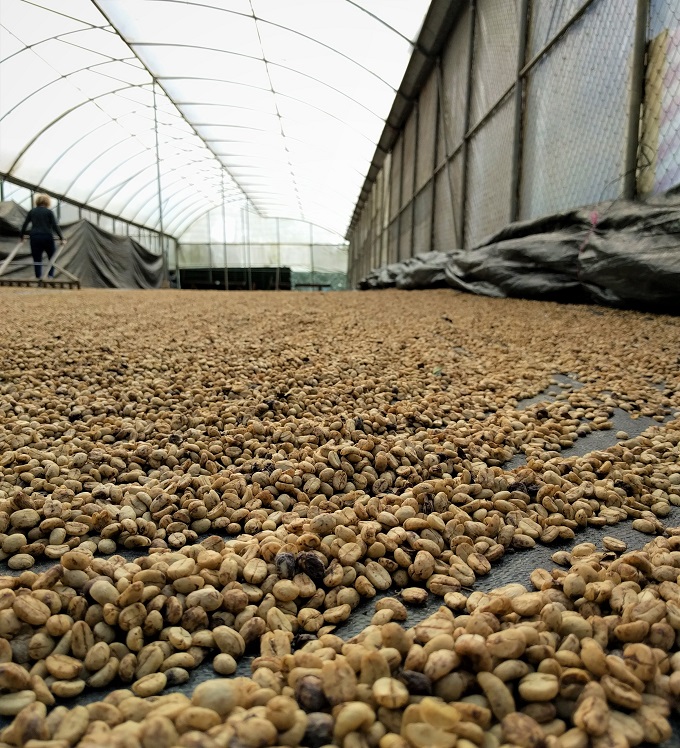
Natural Processing (also known as Dry Processing)
Natural Coffee Processing is when coffee beans are dried within the coffee “cherry,” a thin coating of tart red fruit. This method is most common in arid regions, because it requires much less water, but nowadays many farms all over the world prepare special lots of Natural beans for the premium market.
There are many variations on this method, leading to incredibly diverse cups. The basic approach is to harvest ripe coffee cherries, then spread them out on a concrete patio (though there are still plenty of farms that are so small and impoverished that they cannot afford the concrete and simply lay the coffee cherries on the ground). They let them dry slowly, covering with tarps to block the sun and delay drying if necessary, for 2-3 weeks or more. When the fermenting fruit has imparted just the right amount of bright citrus and berry notes, then farmers use machines called “pulpers” or “hullers” to mechanically remove all fruit (or they may pound and winnow the beans the old-fashioned way). Then they get graded and bagged for shipping.
Many people seek out Natural coffees not only because it is a fun flavor adventure to discover so many bright and exciting tones, but also because they use less local resources, making them more environmentally-friendly and sustainable.
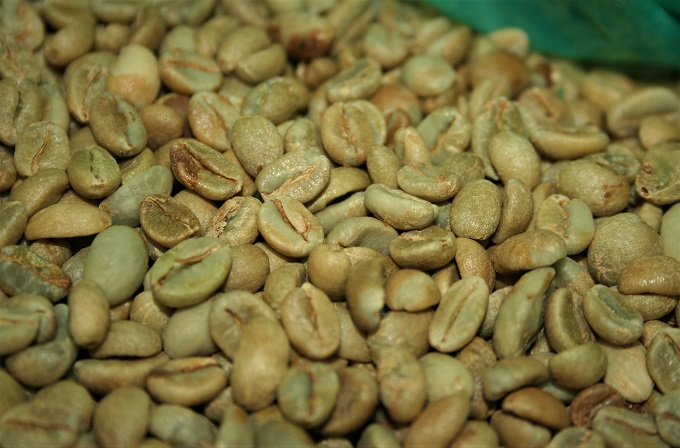
Flavor profiles vary widely among Naturals, but the most important distinction is between two main categories – “fruity” vs “not fruity” (that’s not technical language! just the best way that we have found to explain clearly), also referred to as “ferment” vs “non-ferment” (but that can be confusing because “ferment” is also sometimes used to describe unpalatable flavors caused by processing defects).
Roasting Naturals can be a little more challenging because variations between individual beans are increased when dried in the cherries – each one ends up with slightly different moisture content and appearance. As a result, beans may roast unevenly and there will be more chaff. Historically considered an inferior process, over the last few decades more precise Natural Coffee Processing techniques have been dialed in to create unique products that often demand a premium over Washed coffees. Still, they can be a little unpredictable – adding that much more fun to your flavor adventure!
“Fruity” (or Ferment) Natural:
Farmers pick ripe cherries and arrange them in a single layer to air-dry – not too fast, as they need time for the fruit to ferment and add sweet/sour/spicy layers to the beans – and then use a mechanical huller to remove the fruits when the beans are down to about 12% moisture content.
This process is very sensitive. The desired flavor profile usually contains a strong blueberry note, but actually achieving that is really quite rare. The darker fruit notes come from just a hint of fermentation – if coffee cherries are not fermented enough, flavor profiles tend to resemble the more traditional Brazil processing, or if fermented too much, undesirable tones resembling rotten fruit, almost boozy, will tend to develop. Over time, fermentation will begin by adding darker fruit tones and then as it progresses more cherry notes and then an almost strawberry aspect, and further from there to the boozy, over-fermented flavors. Although new technology allows much better control of Natural Processing and delivers more reliable products, this is the original way that coffee was produced and it still gives an artisanal cup with an old world style.
“Conventional” (or Non-Ferment) Natural:
Brazil has made this process famous, and their weather has made it mandatory – most years the harvest season is extremely dry. So this process is similar to the above but the drying time passes very quickly. In some climates, this can even happen on its own – “Raisin Natural” coffees are left on the trees to dry. These varieties tend to come only from regions with dry climates and typically produce more traditional flavor profiles.
Combo of tones:
In practice, most naturals have a mix of fruity and conventional flavors. Some offerings will be powerfully fruity (Natural Ethiopias, Natural Panamas, or Bali Kintamani for example), some mildly fruity only detectable at lighter roasts, and some will have no detectable ferment (standard Brazil coffees). Remember to read the tasting notes to see what aspects of Natural Processing are detectable in each unique lot.
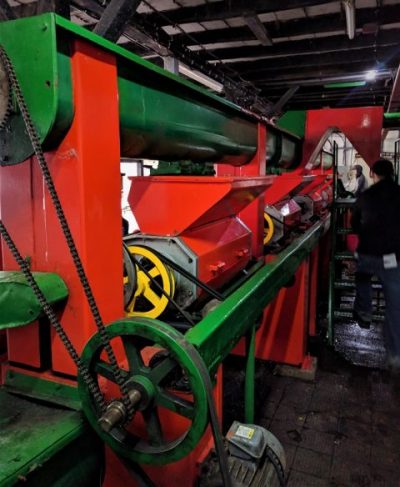
Washed Processing (also known as Wet Processing)
Washed Processing is the original premium processing method, developed in the early 19th century alongside Industrial Revolution advances in mechanical technology.
The first part of the process is called “wet milling.” Step one is to remove all of the fruit, usually within 24 hours of harvest. Immediately after fruit removal with a “pulper” that repeatedly washes and brushes the coffee cherries, mostly-clean beans are dumped into tanks/tubs of spring water where they soak for 12-48 hours. A tiny bit of fermentation happens to loosen any fruit left on the beans. Then farmers move beans through a channel system with fresh water continuously running over them (or in some cases specialized pressure-washer machines), until the water is clear and all remaining fruit has been removed. At the other end of the channel system, beans are hauled off to drying patios or huge rotating drum dryers called “gardiolas” until they reach 12% moisture.
The second part is called “dry milling,” and involves passing beans through a series of machines that remove chaff and sort by size and density, leading to coffees that are very clean and consistent. This aspect of Washed Processing is what facilitates commercial roasters’ success with much larger batch sizes and darker roast points (too much chaff can be a fire hazard).
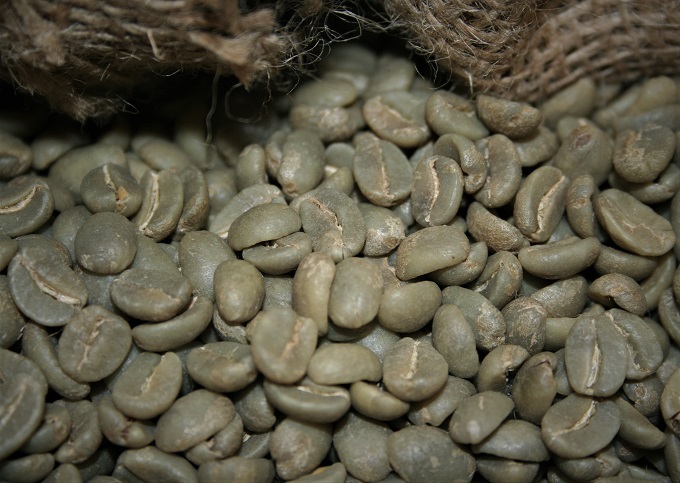
Because washing beans before and after minimal fermentation removes most of the fruit flavors and acidity, more subtle cocoa and spicy flavors often rise to the fore in “Fully Washed” coffees. They also tend to be much more reliable from lot to lot – a washed coffee is unlikely to bring too many surprises.
Hybrid Washed Processing:
There are countless variations on both Natural and Washed Processing – think of it more like a spectrum than a pair of opposites.
Nowadays, some farmers are experimenting with leaving beans in cherries for a short time before running through the washing process, which tends to impart a little consistent fruit note in the cup. These coffees are sometimes called “Double Washed” because cherries and beans go through multiple tubs to ensure that the fermentation process is expertly controlled. Some farms are even playing with enzymatic or yeast treatments during the soaking period, scientifically imparting very specific flavors in a fashion similar to craft beers. Or maybe they got the idea from the celebrated Kopi Luwak – now there is an unusual coffee processing method!
Back in the day, Washed coffee never had a fruit note in the cup. If it did, it was inconsistent and usually came from a couple of beans getting stuck in the soak tubs and over-fermenting. This is why the term “ferment” is sometimes used to describe a defect. But popular trends toward exciting and novel Natural coffees are dramatically changing the market demands, and so nowadays many farms purposely give their Washed beans a slight ferment treatment to produce a more interesting cup.
Next, we will look at some of the most popular hybrid processing methods…
Semi-Washed Processing
A few very different specialty techniques all fall under the broad category of Semi-Washed Coffee Processing. In most cases, these hybrid processing formulas are made necessary by regional climate variations, or may be new experimental methods employed in the pursuit of exciting new flavors.
“Pulped Natural” :
Common in Brazil and beginning to be adopted for boutique lots in other Latin American countries, this process uses slightly less water than traditional Fully Washed but minimizes the fermentation much more than a typical Natural. Basically, farmers just skip the soaking step (which produces a little fermentation) by using a special machine to remove just the outer skin of the coffee cherry, leaving most of the fruit or “pulp” still attached before they spread them out on the drying patio. Beans dry out significantly faster than in the normal Natural Process, gaining only minimal fruity notes, and then the pulp is blasted off the beans with a special pressurized-water pulper.
The biggest benefit of this method is that sorting out bad beans (ie, under- or over-ripe) before they go through the pulper is much easier, so the end result is significantly more controlled and consistent than other methods, while reducing at least some of the excessive water wastage commonly seen in Washed Processing. The flavor profiles will tend to be almost exactly like Washed Processing though, so the name can feel a little misleading.
“Honey” :
“Honey” or “Miel” Coffee Processing is a trendy new technique becoming more popular in Central America, and it produces coffee with less acidity than natural or washed processes. Honey Processing involves stripping off the skin and outer layer of fruit right after picking, then beans are dried with some residual fruit, a sticky (“honey”) layer called “mucilage” still clinging to the thin seed skin that eventually becomes the chaff. Depending on the farmers’ desired outcome, they may leave more fruit on the beans and extend the dry times to get closer to a ferment Natural, or they may strip off all but a tiny bit and then rinse the beans in spring water, speed up dry times, and get a product much closer to Washed Process.
For farmers, the advantage of Honey Processing is an approximation of some of the interesting characteristics of Natural coffees with lower risk of mold and over-fermentation and a slightly shorter dry time. For consumers, the appeal lies in intensely sweet coffees that stand out from traditional Central American varietals.
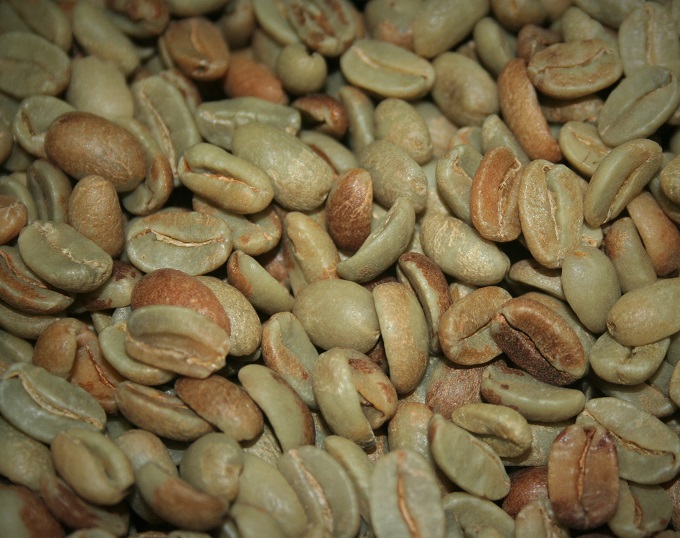
Again, be sure to read the tasting notes so that you will know what to expect with each distinct Honey Process coffee. Often times it is difficult to tell the difference between a Honey Process coffee at the natural end of the spectrum and a true “Full Natural,” and likewise between a Honey Process coffee at the washed end of the spectrum and a true “Fully Washed.” The Natural end of the spectrum may produce more uniform beans, or if closer to Washed the main perk is often raised acidity and sweetness (of course, many lots will fall around the middle of the spectrum and display a combination of both benefits). This may be contrary to your expectations – usually, Washed coffees are known for consistency, and Naturals are known for brighter flavors – but that is just part of what makes Honey coffees so fun to try!
Choosing between Honey Process coffees is made a little more confusing by a vague color-coding system used by some estates. Color codes are based simply on the look of the beans and are determined mostly by exposure to light. Yellow Honey has had the most light exposure, indicating that it dried quickly, in about 1 week (and therefore will tend to be closer to the Washed end of the spectrum). Red Honey is kept mostly in the shade to slow the drying time to about 2 weeks (and therefore will be in the middle of the spectrum). In sunny conditions, farmers will cover the drying coffee completely to reduce light exposure, and Black Honey coffees get the most shelter from the light, meaning they dry slowly, usually three weeks or more (and therefore will tend to be closer to the Natural end of the spectrum). This extremely labor-intensive method produces the rarest and most expensive of the Honey Process coffees.
“Indo Wet-Hulled” :
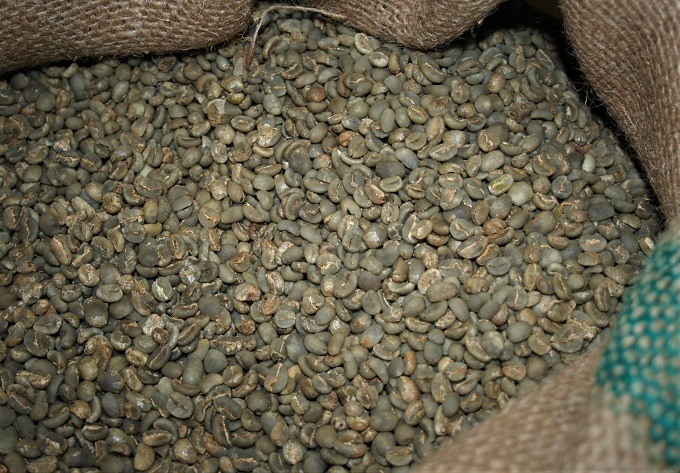
Indonesia has an old-world process, used for 90% of their beans, which falls into the semi-washed category but has a very different result. Another tradition necessitated by regional climate, Indonesia’s harvest season is very wet, and the requirements of transportation between islands means that farmers needed to develop a technique that effectively preserved the beans even if it was impossible to dry them fully on the estate.
Usually a low-tech method, it begins with farmers stripping off some of the fruit and drying the beans down to about 20-30% moisture content, then they reintroduce water to the beans and wash off the fruit, and then clean beans are laid out on palm leaves on the ground (occasionally cement patios in some modern areas) and allowed to dry slowly. This special process greatly reduces acidity, and although these beans look a little splotchy in the roaster, they produce a cup full of rich body and robust earthiness, making them favorites for dark roasts.
Other Special Processing Methods
“Monsooned” :
This one is a real oddball, but we get questions about it so often that we figured that it just had to be listed here. “Monsooned” coffee, a specialty product coming only from India, first goes through a typical Washed Process. After that, things get really interesting…
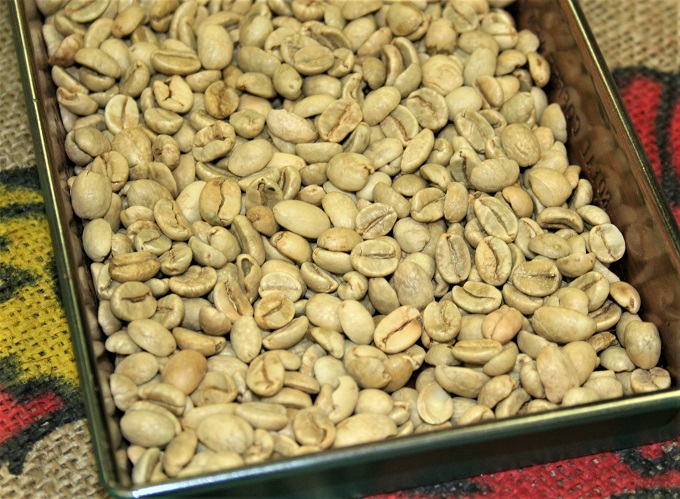
Historically, coffee grown in India spent weeks or months on ships crossing the wide oceans. Sometimes, the torrential downpours of the monsoon season trapped ships in harbor for an additional 3 months or more. Coffee beans on these ships absorbed water from the hot moist air, then dried again, repeatedly swelling in size and subtly changing chemistry and flavor profile.
Originally, this process was unintentional and undesirable, but it turned out that a lot of people really enjoyed the mild, low acidity, creamy and earthy body of this unique offering. So, over the generations Indian coffee farmers learned how to reproduce the effect consistently and called the distinctive puffy blonde beans “Monsooned.”
During the rainy season of June-August, coffee beans are spread out inside well-ventilated warehouses and allowed to slowly absorb moisture. After bloating in size, beans must be periodically bagged and stacked for a time, and then spread out again to ensure proper and uniform “monsooning.” That means that beans are frequently tested to ensure that they are retaining just the right moisture content, and makes this an extremely labor-intensive process.
After September, when rains finally subside and temperatures rise, ghostly pale beans are sent through the final grading (gravity tables and hand-sorting) to confirm consistency and quality, and then exported. This special processing method produces very low acidity, thick rich body, and subdued earthy and spicy tones, making an exceptional dark roast.
Decaffeination:
All decaffeinated coffee beans will first go through one of the above processing methods. After beans are fully prepared, they must go through an additional process to remove caffeine.
In the early days of decaffeination, concentrated chemical solvents were used to strip the caffeine out of the beans. At first it was primarily benzene, but although that process was easy and effective, it was undesirable because it sometimes made the beans taste bad and many consumers feared the carcinogenic effects of benzene in their coffee. In theory, 100% of chemical solvents were removed before sale, and even if not, the benzene would evaporate during roasting – but still, it made people worry.
Many other solvents have been tested, and today the two that are favored are methylene chloride or ethyl acetate, both cheap common industrial chemicals that leave no toxic residue. These chemical decaffeination processes are mostly conducted by factories in Europe – you might see the label KVW (Kaffee Veredelugs Werk) – and account for the vast majority of decaf coffees. These methods continue to be popular because they are relatively easy, requiring only that beans be soaked in large tanks filled with solvents diluted in water. The specialized solvents selectively leach out caffeine but leave most of the countless other natural chemicals that give the beans their unique flavors.
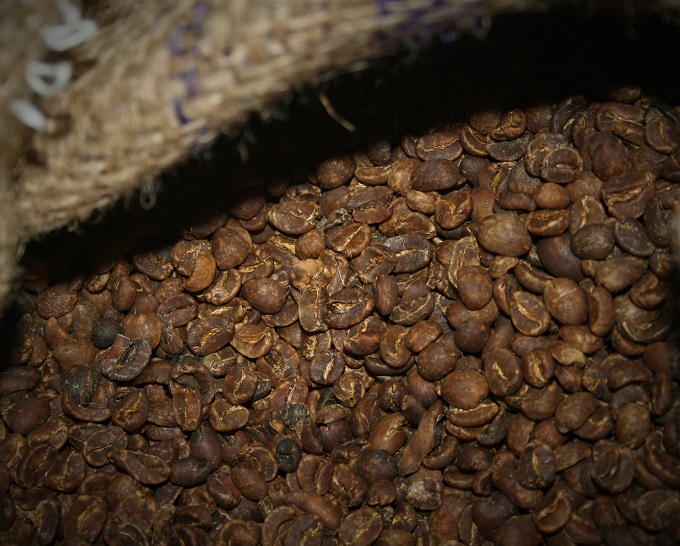
It took over 50 years of research and experimentation, but finally in the 1980s, scientists had perfected a commercial-scale method which used water only to produce delicious, premium-quality decaffeinated coffees. Nowadays there are two competing but nearly identical proprietary processes. Both are trademarked and highly restricted to a single operation, making them relatively rare. You may have seen coffees labeled SWP (Swiss Water Process, made in British Columbia, Canada) or MWP (Mountain Water Process, made in Puebla, Mexico). We will focus on the Mountain Water Process, which is used for almost all of the decaf beans that we carry.
Basically, processors begin with one small batch of beans that are sacrificed – they are steamed or soaked in nearly-boiling water for many hours to leach out caffeine (and many other compounds with it) until the water is thick with oils, acids, alkaloids, etc. The caffeine is removed selectively by passing water through specialized charcoal filters, and then this water is reserved for the next batch of beans.
When the next batch is processed in essentially the same way, but using water already dark with coffee compounds, this causes the caffeine to leach out, but most of the other chemicals – the oils, acids, and alkaloids that give coffee all of its diverse flavors – are already at maximum saturation so they just stay in the beans. Once again, the water is passed through caffeine filters and then reused on the following batch.
The suppliers of both Mountain Water Process and Swiss Water Process coffees claim that 99.9% of caffeine is removed, easily surpassing the FDA requirement of 97% removal. And they produce decaf coffees that are exceptionally tasty, retaining the unique flavors of regional terroir and premium coffee processing methods. But they do give the beans a rough brown appearance, and therefore only lots that already look imperfect are sent to decaffeinated batches.
Coffee chemistry sure is fascinating, and we look forward to learning more as new techniques are developed. Some recent variations on Mountain Water Process involve percolating carbon dioxide through lower-temperature water – this is supposedly even better at preserving flavors. And scientists are now experimenting with innovative “Supercritical CO2 Processes” which almost completely avoid using water at all! And just like every other aspect of the coffee industry, we expect to see increasingly clever and effective ways of producing top-notch delicious specialty coffees in generations to come.
A note about “Peaberries” :
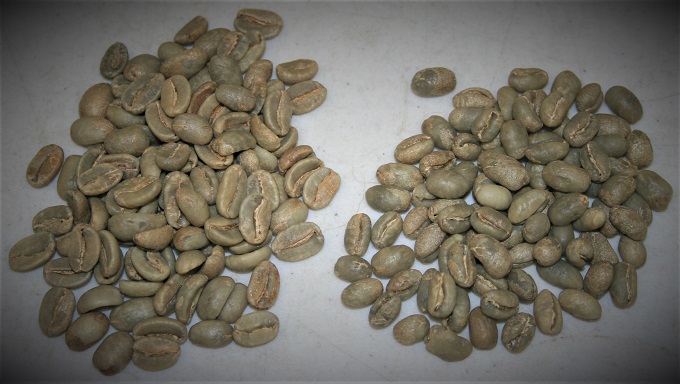
Most coffee cherries contain two seeds; these double seeds grow round on the outsides and flatten against each other on the inside, creating the distinctive shape of normal coffee beans. A small percentage of the time, only one seed gets fertilized, and it grows into a round shape – these abnormal beans are called “Peaberries.”
Peaberries are initially mixed in with normal beans and go through all the same processing methods, but at the end of processing they are very often sorted out into a separate “PB” lot. This is easy to do automatically because they tend to be more dense than the other beans, and is desirable because peaberries may roast unevenly when not separated. Because they roast differently, peaberries may present a slightly different flavor profile than normal beans from the same harvest, even if they went through an identical processing method.
Remember, all of the beans that we carry are superior quality and delicious. We collect the best examples of a wide variety of different processing methods in order to appeal to a wide variety of different tastes. Although processing method is the primary influence on the cup profile, it is also affected by the soil and climate of the growing region as well as the cultivar – compare a Brazil Caturra with a Colombia Caturra, or a Colombia Caturra with a Colombia Gesha, and you may find that they are incredibly different even if they are all “Fully Washed.” Be sure to always consult tasting and roasting notes to better understand the potential of each unique lot.
Read our other Primers: Coffee Regions, Coffee Cultivars, and Coffee Roast Styles
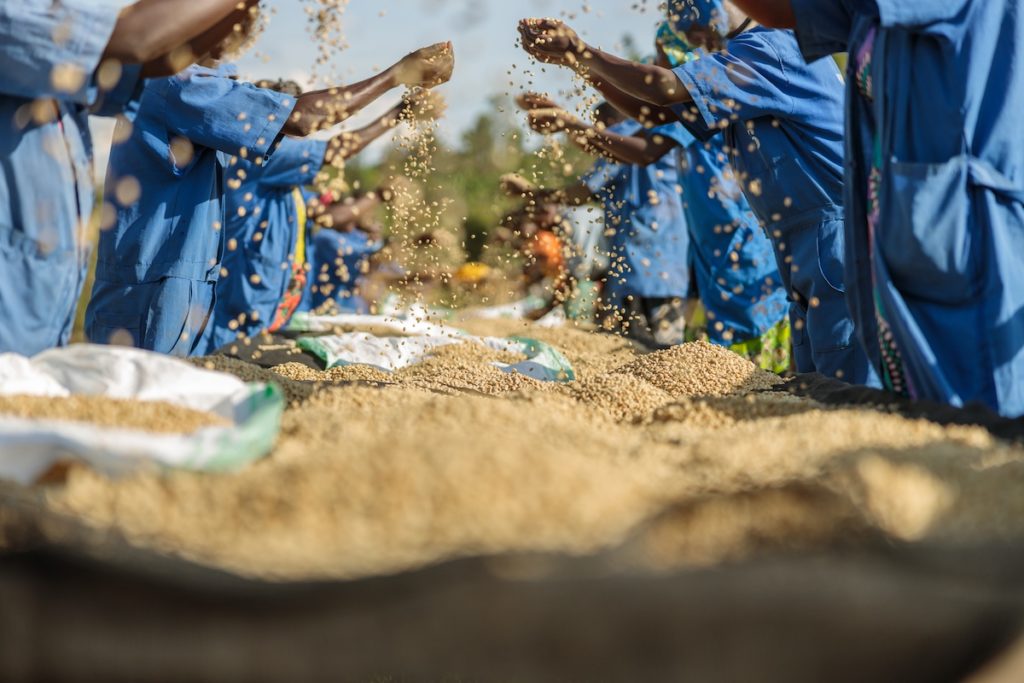
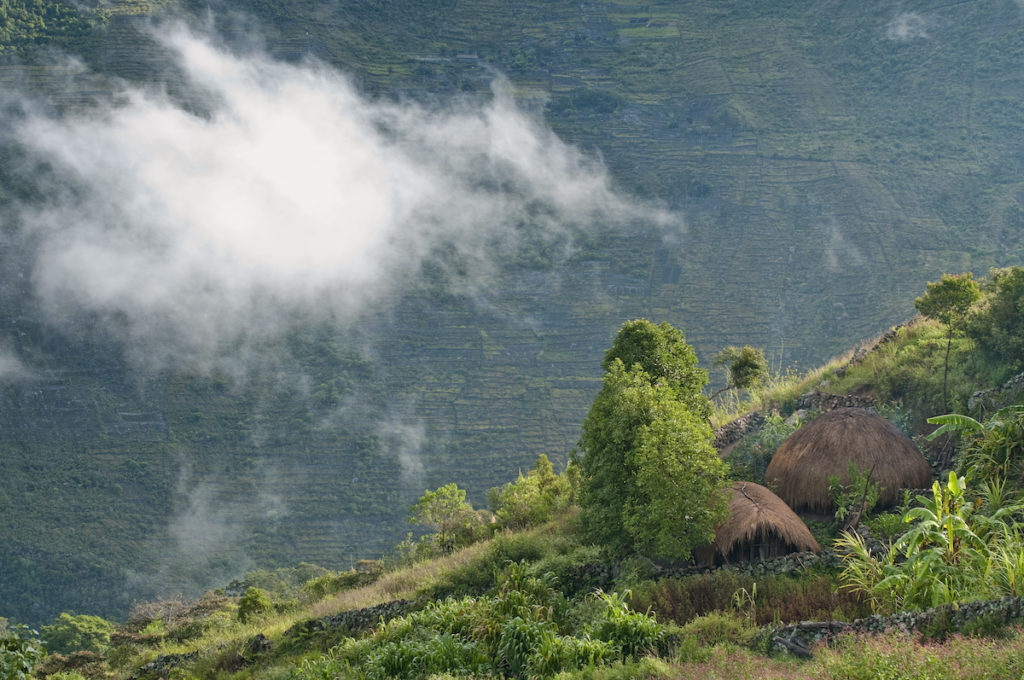

Thanks for the decaf process details. I noticed that decaf beans roast and darken in less time.
Great info on processing. If the type of processing is not indicated in the description, what can we assume about that particlular bean?
Processing information will be listed on each product, next to the arrival date and lot number. Usually if not in the title, the coffee will be washed processed.
Very fresh look with the product pictured and explanation of the product. It would be nice to have a link set up for the stated processing which your explanation of processing is very stated. I also like ability to show all coffees in a single page as I normally don’t like switching pages. Very good update and easy to use.